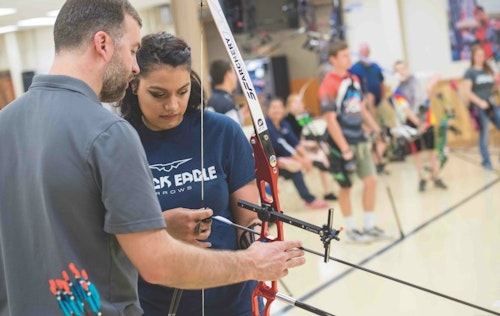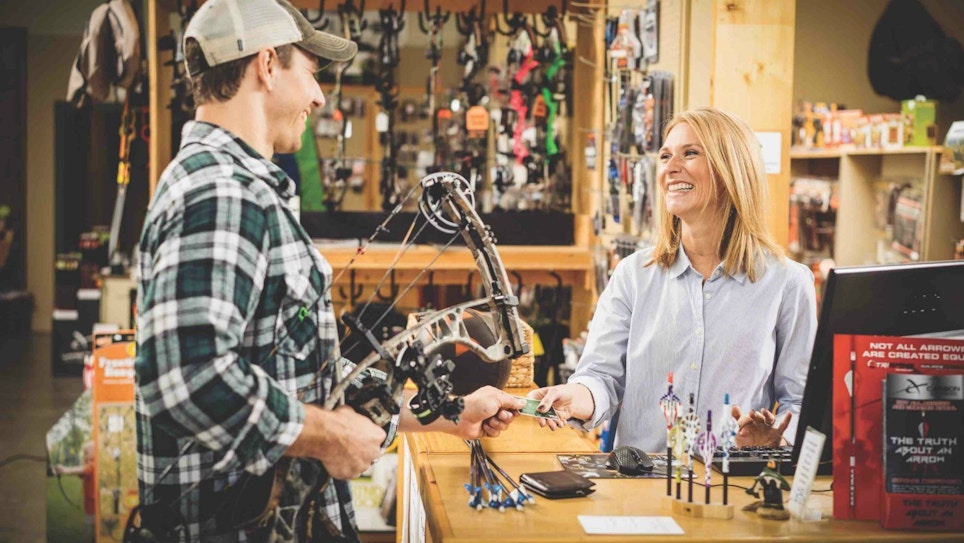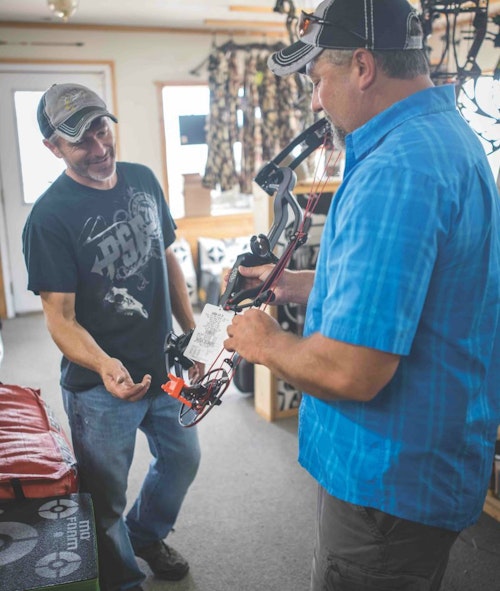Do you remember the days when you might have to drive around to three or four stores to locate a specific item you wanted? I’m not talking about a hot new item that’s flying off the shelves; I mean a jacket in a particular color or a book that had been out for long enough that more popular books were squeezing it off the shelf.
Today, consumers don’t need to do that anymore. If they want something, they can almost always find someone selling it online. And that fact is changing retail as we know it.
In a recent article on Shopify titled “10 Retail Experts Share Their #1 Tip for Marketing and Growing Your Store,” Doug Stephens, the author of The Retail Revival, said, “There’s very little you can sell that can’t be gotten elsewhere. Focus instead on how you sell what you sell. Completely differentiate your customer experience and make sure it’s remarkable.”
This emphasis on experience over acquisition is known as experiential retail, and retailers both big and small have become obsessed with it.
More Than Gimmicks
Google “experiential retail,” and you’ll find a dizzying array of examples of retail run amok. Desperate to provide shoppers with an experience worth leaving home for, big retailers have come up with some truly mind-boggling ideas. One beauty brand, for example, allows customers to take a hot air balloon ride through France — with the help of virtual reality — in the company’s flagship store in Manhattan. And a major candle retailer created an “immersive pop-up store in New York” with 10 “fun-filled exhibits” that Fashion Weekly Online reports were “crafted to demonstrate how the emotional power of scented candles can transform a space and transport customers to a place in time.”
Let’s face it — if consumers expect some kind of Alice in Wonderland experience every time they head out to buy a scented candle, small retailers don’t stand a chance.
Fortunately, that doesn’t seem to be the case. While novel, these approaches to retail miss what consumers really want in a shopping experience. Splashy gimmicks may garner some mentions on social media, but shoppers don’t have time to jaunt off on a VR-enabled balloon tour of France while they’re running errands. More importantly, what do these gimmicks have to do with the brand?
Nothing. And that’s a problem.
The Right Kind of Experience
Small retailers are perfectly situated to create the kind of experience consumers actually want, and many already do. However, many retailers still operate as if their primary purpose is to sell products.
If you want your business to thrive in today’s retail landscape, you have to do a lot more than just sell archery gear to people who happen to walk into your shop.
So, what is it that customers want from a retail experience? According to a 2018 report from JLL Retail, there are six dimensions of experiential retail. A positive retail experience should be intuitive, accessible, human, meaningful, immersive and personalized.
Let’s take a look at each of these dimensions and how they apply to your store.
Intuitive
Online shopping is easy. All you have to do is type what you’re looking for into the search bar on Amazon, and you’ll see numerous options, sortable by price, relevance or rating. That’s what consumers are used to, and if shopping at your store is too difficult, you’re going to lose sales to digital competitors.
To ensure that you’re providing an intuitive experience, make sure you stock the products consumers are looking for, and that those products are organized in a way that makes sense. If a customer can’t find what they’re looking for, and they can’t find an associate to help them right away, they have the option of pulling out their phone and getting what they want shipped straight to their door.
You also need to make sure the checkout process is quick and painless. Is someone at the cash register ready to help customers who want to make a purchase? Have enough staff on hand that customers aren’t standing around waiting to give you their money.
Accessible
In the digital age, consumers are used to getting information when they want it. If a potential customer wants to know what time your shop opens the next day, they expect to be able to easily find that information online. And that means your shop needs a website.
Yes, a website. Not just a Facebook page — a website.
“It can be super simple,” said Nicole Nash, ATA manager of range and retail programs. “But you need a clean website that provides the key information customers need in order to get to know you.”
Your online presence is, Nash explained, the first impression you’ll make on many potential customers. “Everyone has a cellphone,” she said. “When people are going out to eat, they look up the dinner menu from their phones. It’s the same thing for an archery shop. They’re going to look up where they want to go.”
Your website and the rest of your digital presence is the very first experience many people will have with your shop. A website that’s hard to navigate, devoid of vital information, or just plain nonexistent isn’t going to give the kind of impression that you want customers to have of your brand.
If you already have a website, you may want to consider making it more than just a place to provide information. Can customers use your website to book lessons or reserve time on your range? That requires a more advanced website, but the investment translates to significantly increased convenience for your customers and most likely more revenue for you.
Think of it this way: A college student is watching The Hunger Games for the 50th time. It’s midnight, and as she watches Katniss do something cool with a bow and arrow (I, uh, never saw the movie), she’s reminded that she’s always wanted to try archery. She pulls out her phone, does a Google search for archery near her and finds your shop. With a few clicks, she makes her way to your lessons page, where she’s able to read about your intro to archery class, view class times and book a class. Now she’s committed to showing up. Had that not been available to her online, she might have made a mental note to look into archery classes the next day and then promptly forgotten all about it in the morning.
The internet makes people impulsive. Harness those impulses by having what you offer available for them whenever they want it.
Human
This is the biggest advantage brick-and-mortar stores have over their digital competitors: customers get to speak to an actual human. No pressing “1” to speak to a representative, no waiting around for an email response — this is where you can shine.
In the war against Amazon, you — and your staff — are the greatest weapons. Your knowledge, your experience and your skills are exactly what Amazon lacks.
“The biggest thing that we tell retailers is to create an atmosphere and a place that Amazon and the larger stores can’t provide,” said Nash. “In other words, advertise the services that Amazon can’t do. And that is putting a bow together and making sure they have the right draw length and tuning their bow, those types of set-up services.”
Also, remember that many people are coming to your shop specifically for your expertise. Consumers are pretty much on their own when it comes to selecting the right products on Amazon. Sure, they can check reviews, but unethical manufacturers and Amazon sellers pay for glowing reviews, leaving shoppers wondering if the reviews they’re reading are legitimate or not.
“Retailers want to become that hub of information for their customers,” Nash said. “Customers will keep returning to that shop because they know they’re going to get the information you’re looking for.”
By having knowledgeable staff available to answer questions and make recommendations for customers based on their specific needs, you can set yourself apart from Amazon.
Finally, make sure that the human element of your retail establishment is positive. “Do you greet your customers when they walk in?” Nash pointed out. “Do you create an atmosphere that makes them feel welcomed? Even if you can’t go to them and answer their questions right away, simply by greeting them and telling them you’ll be with them in a minute, you’re letting the customer know that they’re important, that you want them there.”

Meaningful
Today’s consumers, especially younger consumers, like to patronize businesses that stand for something. All things being equal, given the choice between giving their money to a large, soulless corporation or a small local business making a difference in their community, they’d much prefer the latter. That’s why many major brands are weighing in on issues that consumers would never have expected businesses to care about 30 years ago.
This is one area that the archery industry has always done well. Whether it’s supporting conservation efforts, returning combat veterans or youth archery leagues, this industry is full of people passionate about doing good. What’s more, this is the result of a genuine desire to help others, not simply for the publicity.
You don’t have to announce your thoughts on every divisive issue currently in the news, but if there are causes that you believe in that relate to your brand, let your customers know.
Immersive
It’s hard to look at your business with fresh eyes, but try walking into your store and evaluating it the way a brand-new customer might. What do you notice first, and is that consistent with your brand?
This can be tricky for archery retailers looking to cater to the recreational crowd. While your bowhunting customers might appreciate an impressive taxidermy collection, a couple looking for a fun date night at an archery range might be turned off by what they see as a bunch of dead animals.
When Archery Business interviewed the owners of La Crosse Archery for the 2017 Dealers of the Year cover story, Keith Rosenthal talked about how they handled that issue.
“When we first started, we had deer heads up all over the place,” he said. “Two things happened. One, we asked a competitor of ours to come in and give us an honest critique. He asked if we were selling deer heads. We said no. He said, ‘Then why are you taking valuable retail space up with deer heads?’ The other thing was, it made it uninviting to people who weren’t hunters. So the deer heads came down. We have a neat little bobcat and a bear and a turkey. That’s what you’ll find in our retail area. When you go into the youth area, there’s not a single mount. It’s only when you go back to the big range area that you find a deer head.”
You also want to make sure your archery shop is clean, your employees are wearing some kind of uniform that sets them apart from your customers and your product displays are appealing.
To further create an immersive experience, consider offering seminars or classes on topics of interest to your customers. Archers might be excited to learn how to fletch their own arrows, while bowhunting customers might enjoy a seminar on whitetail hunting tactics or DIY game processing.
Personalized
Amazon has complicated algorithms and artificial intelligence designed to offer its customers a personalized experience. You may not be able to purchase advanced AI software, but offering personalized service is what many small retailers do best.
Nash said the most important thing you can do when you’re with a customer is really listen to what they want. You could show a customer some of your most popular products because you know those products sell well. But that’s exactly what Amazon does. Instead, focus on what that individual customer needs, and tailor your suggestions to them.
Personalizing the experience is especially important when you’re dealing with someone completely new to archery. “Instead of telling them they need this bow and that arrow, try to get an idea of whether they’ve ever shot a bow before,” Nash said. “If they’re never shot a bow before, encourage them to attend your intro to archery class first so they can better make a decision about what type of archery to get into. Let them know the different types of archery that are offered. It’s not just bowhunting, it’s not just competitive. Some people just want to shoot in the backyard. Some people just want to come in and shoot for an hour or so every few months just for something fun to do. Let them know they have options and let them choose on their own which options they want to go with.”
To that end, Nash says it’s critical to offer a progression of classes.
“If you think of it as steps, they need to take baby steps in order to become comfortable,” she explained. “You let them take those steps as they want to take them. You don’t want to rush them. If they want to take a 1-hour introductory class and that’s all they want to take for the next few months, that’s okay. If they want to a take a multi-week class and they stay in that area until they become comfortable, that’s fine too. If they really get into archery and really fast track their knowledge and experience, that’s even better. You’re letting the customer make their choice.”
That progression of classes is a key part of the ATA’s Retail Growth Initiative. If you don’t have enough staff to teach the lessons you want to offer, Nash suggested hiring part-time instructors or partnering with a local archery club by offering free range time in exchange for archery instruction at your shop.
To learn more about the Retail Growth Initiative, visit www.archerytrade.org. You can also reach out to ATA staff for help. “We’re here to help retailers find the route they need to go,” Nash added. “Part of our strategic planning is to increase archery participation, and making sure retail shops thrive is a part of that.”

The Power of a Positive Experience
Yes, the internet has changed retail, and in many ways has made life harder for small mom-and-pop shops. But it’s not all bad news. If you wow your customers, they’re going to talk. And with social media, they can share that positive experience with more people than ever.
“They want to tell their friends about the experience they just had, and it creates that electronic word of mouth for people to see that this archery shop is doing more than just selling equipment,” Nash said.
And doing more than just selling equipment is what’s going to keep customers strolling through your doors no matter what Amazon does.







